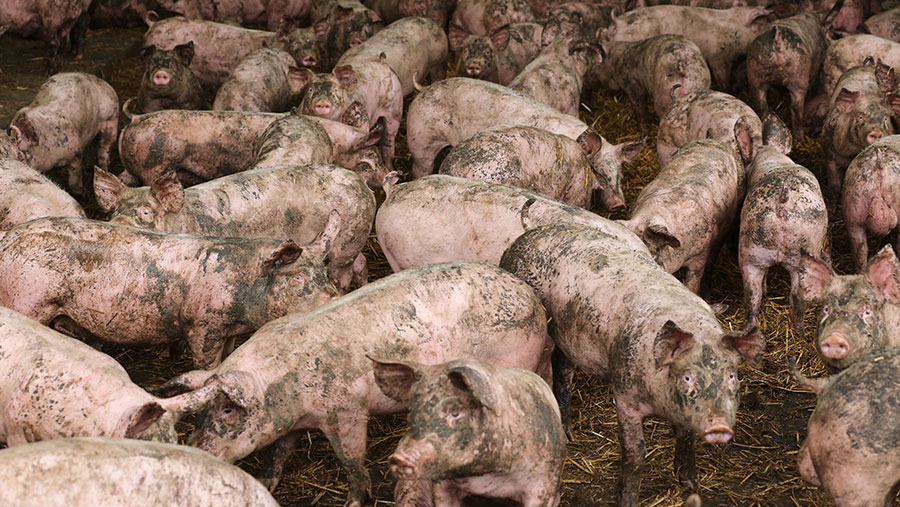Pig prices nudge £2/kg but costs of production still bite
 © Tim Scrivener
© Tim Scrivener Finished pig prices are up by more than 50p/kg since the start of the year and have risen every week since mid-February.
The EU-spec standard pig price (SPP) averaged 194.28p/kg for the week ending 23 July, an increase of 1.19p/kg on the previous week.
Average carcass weights dropped by 340g on the previous week to 87.54kg, and have fallen by more than 8kg since peaking at the beginning of the year, when the backlog on farms was leading to heavier pigs.
See also: Third-stage pig finisher diets review can help cut losses
For the week ending 16 July, the all-pig price (APP) increased by 1.22p/kg to total 196.69p/kg.
Cost of production
Despite the price gains, producers are still making significant losses, driven by rising costs of production.
Producers are estimated to be losing between £31-£33 a head for finished pigs in July, according to AHDB data, with cost of production estimated at about 230p/kg.
AHDB’s Agri-Market Outlook forecasts a 6% fall in pigmeat production during the second half of 2022.
Pig consultant and valuer Peter Crichton said that commodity prices are still far too high, leading to a gap of about 30p/kg between costs and pig prices, which is translating into losses of anywhere between £25 and £35 a pig.
Mr Crichton said: “Quite a few producers are being forced to sell up as they just can’t keep losing about £30 a pig. The banks have been pretty understanding but even they have their limit.
“Some farmers have switched away from wheat to barley for a cheaper ration. The trouble is, it is cheaper as it is not as good as wheat for finishing pigs, and while they will save money on feed initially, they will block up their accommodation, as they will take longer to finish on farm,” he said.
Europe
Across the EU, grade E deadweight pig prices averaged 163.56p/kg for the week ending 17 July.
The European Commission’s latest EU agricultural markets short-term outlook expects EU pig meat production to drop by 4.7% during 2022, due to high costs of production, reduced exports, and risks from African swine fever.
